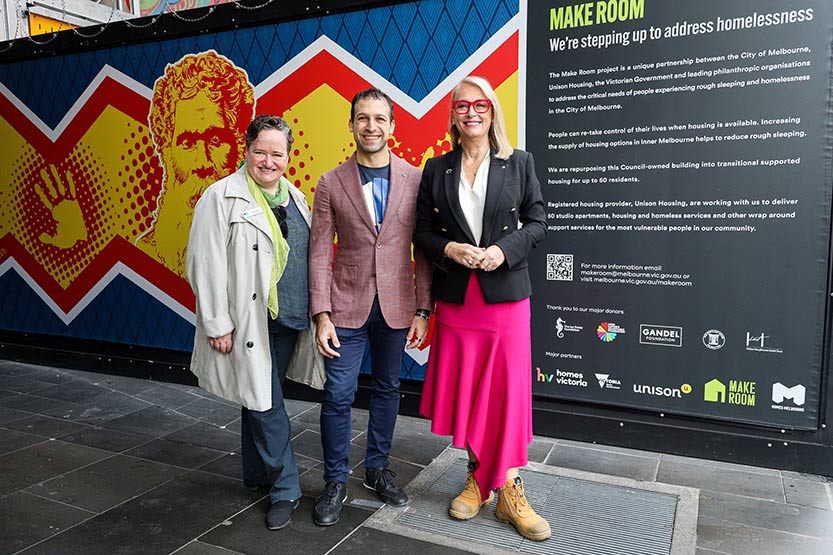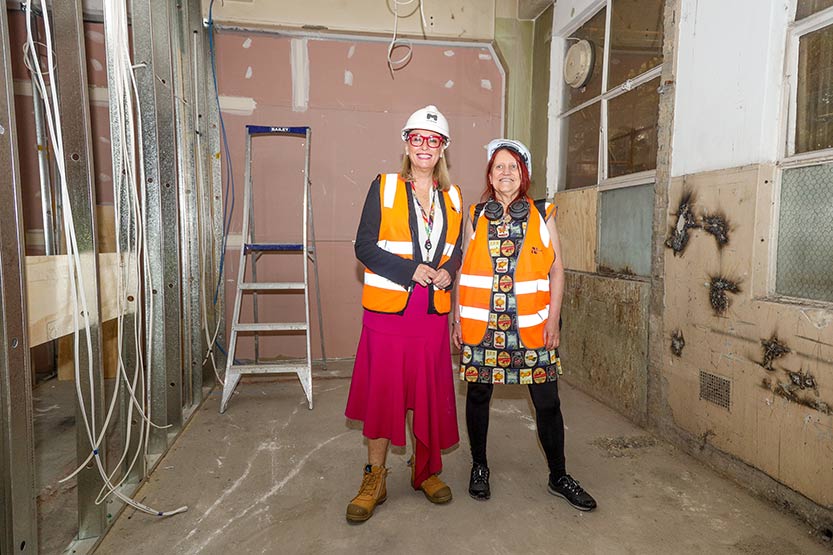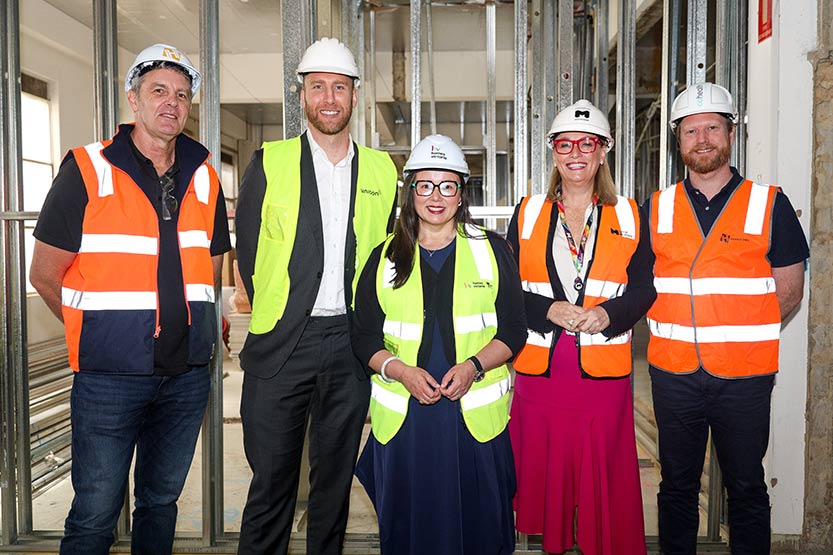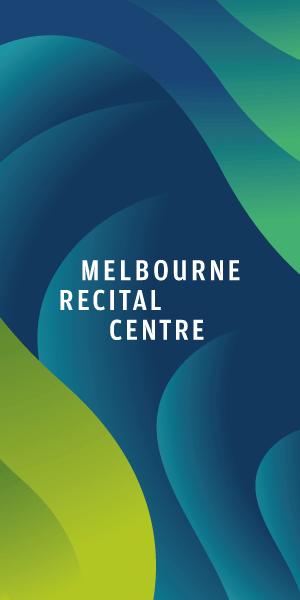Works begin on 50 new apartments for rough sleepers
The renewal of a vacant Little Bourke St building as part of the “Make Room” project has begun.
The transformation of a disused CBD building into 50 apartments for those experiencing homelessness has begun, in what Lord Mayor Sally Capp has termed “life-changing” works.
Builders have stripped back ceilings and partitions inside the vacant six-storey building at 602 Little Bourke St and have started work on fitting each studio apartment with a bedroom, kitchenette and ensuite bathroom.
With 10 units per floor across five levels, the “Make Room” project will also feature a new rooftop garden, communal areas and Indigenous plants and artwork.
A dedicated floor will also provide safe and secure accommodation for women experiencing or at risk of homelessness, and support services for health and housing will be located on-site.
The current six-storey rendered brick building, constructed in 1952, has been previously described by the council as being “in need of some much-needed TLC (tender loving care)”.
Its new design has been informed through people with lived experience of temporary accommodation, and has sought to create a “safe, welcoming environment for everyone”.
It was estimated that the project – an initiative between the City of Melbourne, Victorian Government, Unison Housing, and corporate and philanthropic sectors – would be completed by mid-2024.
Located on the CBD’s western fringe, residents will stay for up to 12 months or until they are connected with long-term housing.
“Every Melburnian deserves to have a safe and secure place to call home, and that’s what we’re delivering with our life-changing Make Room project,” Cr Capp said.
We’re setting a new standard for transitional supported accommodation in Victoria and showing how safe spaces with integrated support services can be created.
“Everyone benefits when we work together to help people out of homelessness. We’ve seen how people can take back control of their lives when they get the housing and support they need.”
“Research shows that for every dollar invested in affordable housing, there is a $3 benefit to the community due to job security, better education, health cost savings, and lower rates of crime and family violence.”

Approved works, set to cost $1.1 million, will see the building be re-rendered, all external windows replaced, construction of a new pedestrian entrance and the landscaping of the rooftop garden.
At an August Future Melbourne Committee meeting, it was revealed 38 people had objected to the plans on the basis it would decrease security and personal safety of surrounding residents, increasing crime rates and litter, and negatively impact nearby commercial interests and property prices.
However most of the objections were deemed irrelevant, as they focused on the “use” of the land as a supported residential facility, which did not require planning permission.
Councillors unanimously supported the project.
Housing Minister Harriet Shing said homelessness was a “complex issue” and backed the initiative was “an important opportunity to make change that matters for people who need it most.”
“Wraparound services [also] play a hugely important role in addressing the causes of homelessness, and getting people into secure and dignified accommodation that meets their needs.”
Creative hoardings have been installed while works at the Little Bourke St site take place, featuring artwork by John Patton including images of Traditional Owners involved in the early civil rights movement in Australia. •
Caption: Lord Mayor Sally Capp with vulnerable communities advocate Helen Matthews at the ‘Make Room’ site on Little Bourke St.

City of Melbourne unveils next urban forest plan for the CBD








 Download the Latest Edition
Download the Latest Edition